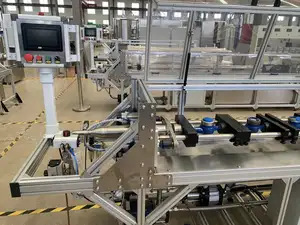Popular in your industry




































Top categories
About how to pressure test a radiator
Introduction
Keeping your car's engine cool is a critical aspect of maintaining its overall health and performance. The radiator, a key component of the engine's cooling system, plays a significant role in this process. However, like any other part, it can develop issues over time, which can lead to overheating and other serious problems. This article provides a comprehensive guide on how to pressure test your car's radiator, a crucial step in identifying and addressing potential radiator problems. From understanding the importance of a well-functioning radiator, recognizing signs of a faulty one, to the step-by-step process of conducting a pressure test, we've got you covered.
Understanding the Importance of a Well-functioning Radiator
A radiator is a crucial component of the engine’s cooling system. It disperses a mix of antifreeze and water, releasing some of the engine’s heat while taking in cool air before returning to the engine. The radiator works in conjunction with the spur line, water pump, and fan clutch, each playing a unique role in maintaining the engine's temperature. A well-functioning radiator ensures the engine doesn't overheat, thus maintaining the overall health and performance of your vehicle.
Signs Your Radiator May Need Pressure Testing
Recognizing the signs of a faulty radiator is crucial. These symptoms include rough shifting or grinding, overheating, abnormally low coolant levels, high temperature readings, radiator sludge, heater malfunction, and corrosion. Persistent high temperature readings and frequent overheating are particularly indicative of radiator issues. Sludgy, discolored buildup in your radiator or low coolant levels sooner than expected can also point to radiator problems. If you notice these signs, it might be time to pressure test your radiator.
Tools Needed for Radiator Pressure Testing
When it comes to pressure testing your car's radiator, the right tools are essential. One such tool is a Radiator Pressure Tester Kit available on Alibaba.com. This kit is designed to help find both internal and external leaks in your cooling system. It features a thumb-operated relief valve for quick and easy pressure release and self-locking quick-disconnecting components. The kit also includes 8 radiator cap adapters, making it versatile enough to service most domestic and imported vehicles.
Step-by-Step Guide to Pressure Test Your Car's Radiator
To pressure test your car's radiator, ensure the engine and the system are cool to avoid burns, and that the cooling system is depressurized. Connect a radiator pressure tester to the coolant reservoir or the radiator. Pump the tester to pressurize the system, which can help identify coolant leaks. This process is also known as a coolant pressure test. It's a valuable method to check the integrity of your cooling system after a coolant flush or when you suspect a leak.
Safety Precautions During the Pressure Test
Practising good radiator safety is crucial to prevent burns and injuries. When checking your radiator, allow the engine to cool first. Use a protective glove and a rag to turn the radiator cap part way, releasing the pressure slowly and safely. Remember, the radiator cap can be hot and should be turned counter-clockwise to open. Once the pressure is safely released, you can finish opening the radiator cap. These precautions are essential during a radiator pressure test to avoid potential harm.
Interpreting the Results of the Pressure Test
Interpreting the results of a pressure test involves observing the gauge on the tester. If the reading doesn't drop within about 10 minutes, there's no leak in the circuit. However, if the reading falls, an external leak can be identified by a fine spray or dribble of coolant. An internal leak is harder to find, but if the pressure consistently drops and no coolant appears, the leak is almost certain to be internal. It's crucial not to over-pressurise the coolant circuit with the tester, as this could stress the circuit components unnecessarily.
Troubleshooting Common Issues
Troubleshooting common issues during a radiator pressure test can be challenging. A pipe may have a tiny hole that only starts leaking when the system is fully hot and at full pressure. This can be difficult to trace. A short-term pressure test may not reveal small leaks. An overnight pressure test might show signs of small leaks, but finding them can still be tough. A blown head gasket may show up if the spark plugs are removed and the system is pressurized. The coolant may collect in the cylinder bore, and by turning the engine over slowly by hand, you may see the coolant expelled by the piston.
When to Seek Professional Help
If you notice signs like overheating, leaking coolant, sludge buildup, damaged radiator hoses, rising temperature gauge, or rust on the radiator, it's time to seek professional help. Ignoring these signs can lead to severe issues. Radiator damage can leave you stranded on the roadside. Therefore, it's crucial to schedule a service appointment as soon as you notice any of these signs. A professional mechanic can accurately diagnose and fix all car radiator issues for you.
Conclusion
Pressure testing your car's radiator is a vital preventive measure to ensure the longevity and performance of your vehicle. It helps identify both internal and external leaks, enabling you to address potential issues before they escalate into costly repairs. However, some problems may require professional help. If you notice persistent signs of radiator issues, such as overheating, leaking coolant, or sludge buildup, it's crucial to seek professional assistance immediately. Remember, a well-maintained radiator contributes significantly to a well-functioning vehicle, ensuring your safety and comfort on the road.
















